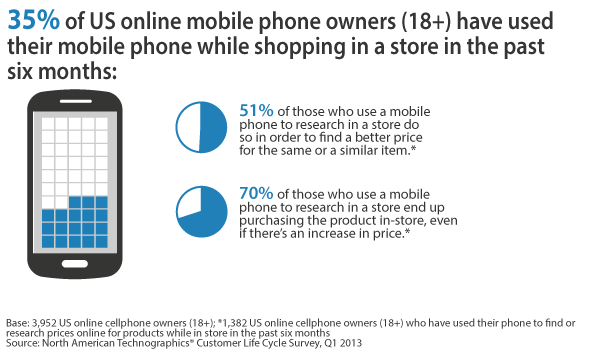The Data Digest: US Consumers’ Mobile Shopping Behaviors
The Forrester Research Mobile Commerce Forecast, 2012 To 2017 (US) indicates that nearly 40% of US mobile phone owners will become mobile phone shoppers by 2017. While this statistic sounds impressive, it means that the majority of consumers will be reluctant to purchase products on their mobile phones. Why aren’t all customers attracted to the unprecedented convenience of anywhere, anytime mobile shopping?
Forrester’s Consumer Technographics® data shows that while consumers use the mobile channel to research competitive product pricing while they’re in a store, they often prefer to purchase their desired product off the shelf, even if the physical item in front of them is not the cheapest option. Consumers are driven by convenience, sometimes at the expense of price:

Consumers still see the mobile phone as a supplemental resource during the purchase journey, rather than as the checkout point itself. As my colleague Sucharita Mulpuru asserts in a recent report on this topic, more retailers are focusing on the elements of the mobile site experience that can help in-store shoppers and even store associates rather than on generating transactions via those devices. By prioritizing features such as product information, ratings and reviews, and even relevant promotions or sales notifications, rather than checkout and payment options, retailers can connect with their mobile consumer base without forsaking one of the most treasured elements of the commercial exchange: convenience.